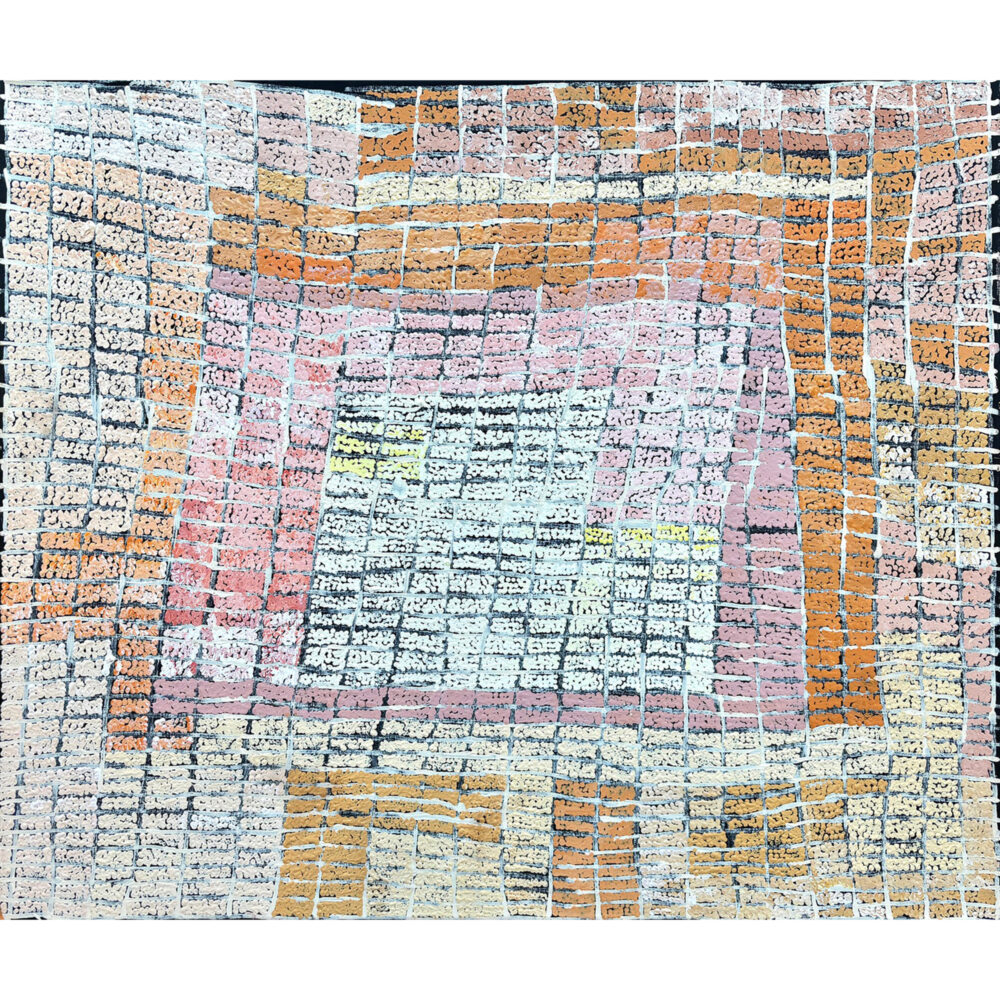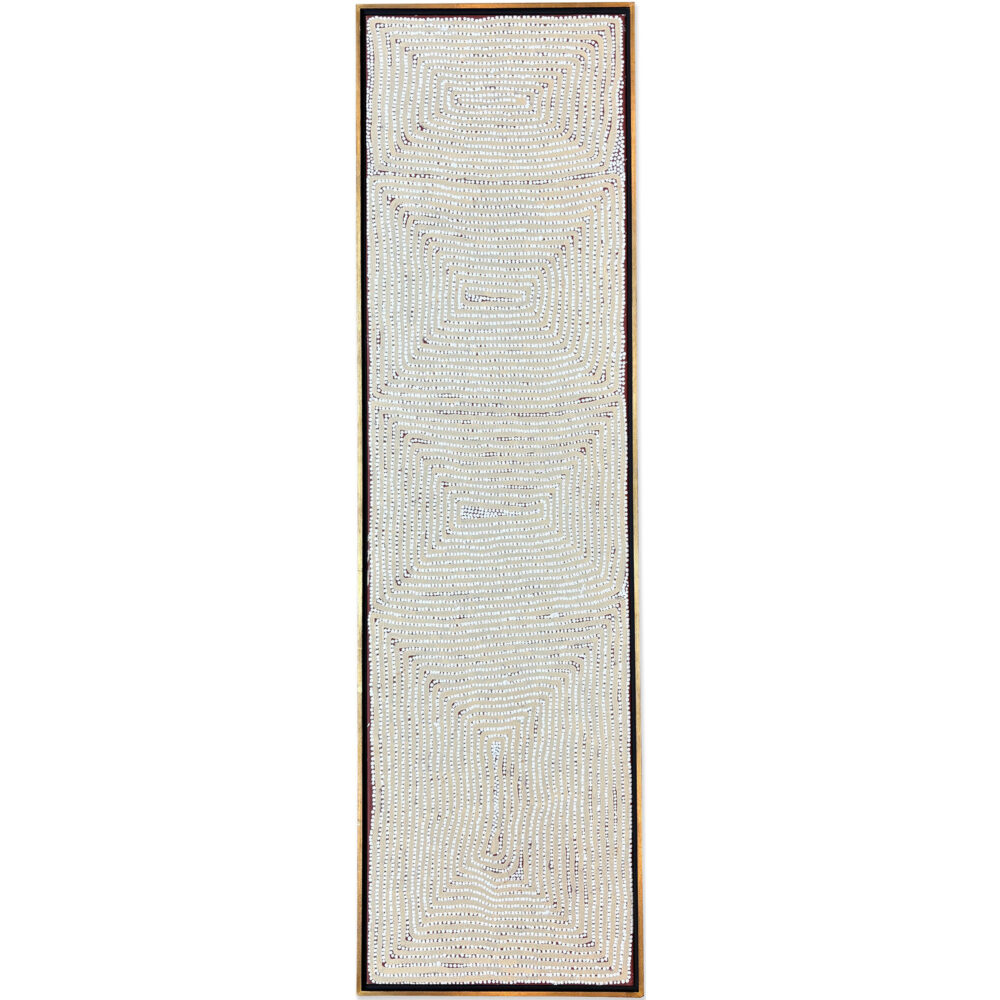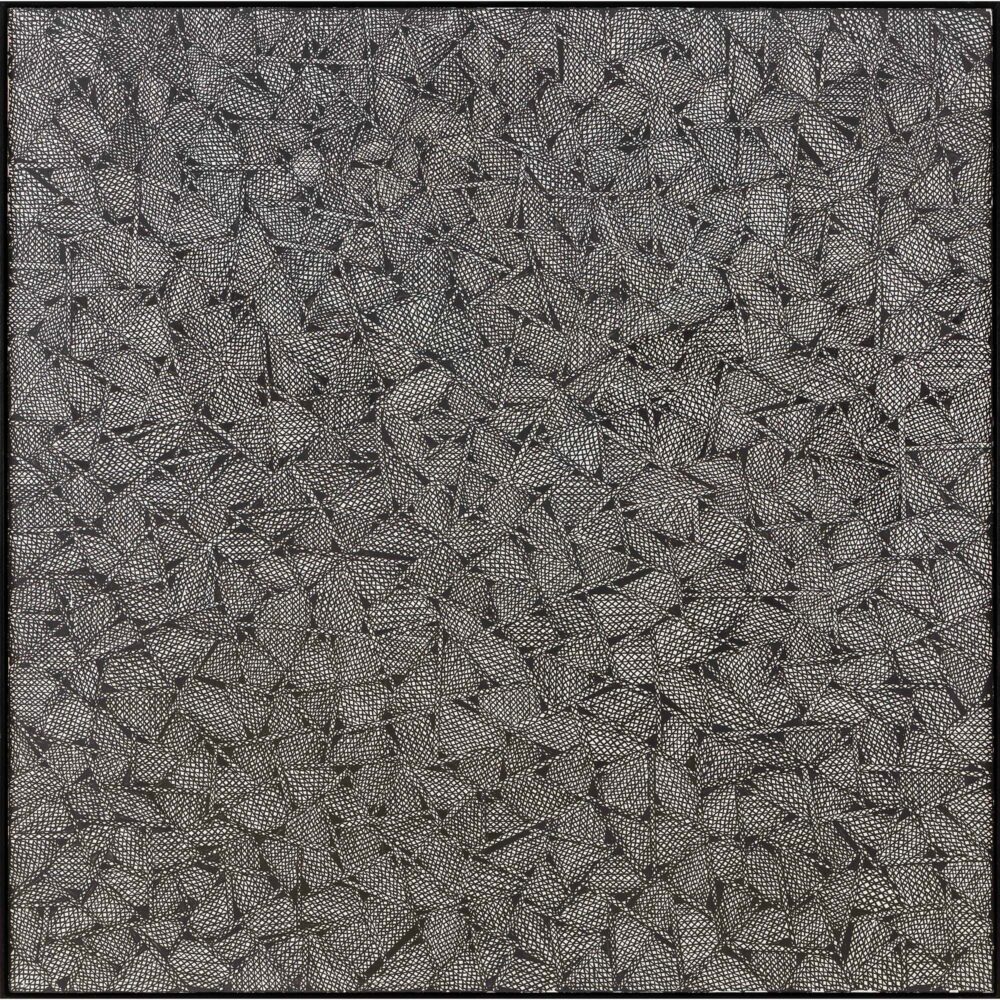
Nici Cumpston OAM is a Barkandji artist, curator, and photographer known for her hand-coloured photographic prints that document the environmental and cultural histories of Barkandji Country. Her practice focuses on river systems, floodplains, and ancestral markers such as scar trees and fish traps, revealing enduring First Nations presence in the landscape.
Cumpston handcolours large-scale landscapes of the Murray-Darling river system as a way of documenting traces of Indigenous occupation and to bring our attention to the decline of the area’s delicately balanced ecosystems. In Great Grandmother Barka, Cumpston illustrates the cultural significance of river red gums trees found on the Barka (Darling River) as a symbol of resilience and connection to Country. In making these works, Cumpston is drawing attention not only to the importance but also to the fragility of these natural wonders, which are in a state of declining health and remain under threat from environmental degradation. 1
In addition to her artistic practice, Cumpston has had major curatorial impact. She became Curator of Aboriginal and Torres Strait Islander Art at the Art Gallery of South Australia in 2008, was appointed Artistic Director of Tarnanthi in 2014, awarded the Medal of the Order of Australia in 2019, and in 2025 became Director of the Kluge-Ruhe Aboriginal Art Collection of The University of Virginia in Charlotesville, Virginia – the first Aboriginal person to lead the institution.
Cumpston’s work has been included in key exhibitions such as In The Balance: Art for a Changing World (Museum of Contemporary Art Australia, 2010), Wall Power: Contemporary Australian Photography (European tour, 2017–18), Indigenous Australia: Masterworks from the NGA (Berlin, 2018), Tree Story (Monash University Museum of Art, 2019-20), and solo exhibitions Having-been-there (Kluge-Ruhe Aboriginal Art Collection of The University of Virginia in Charlotesville, Virginia, 2014), Calling In (Michael Reid Berlin, 2018), and Here/EverPresent (Broken Hill City Art Gallery & Michael Reid Gallery Berlin, 2022). She has also been featured in unDisclosed: 2nd National Indigenous Art Triennial (National Gallery of Australia, 2012) and Naadohbii: To Draw Water (Winnipeg Art Gallery, Manitoba, Canada 2021, Melbourne Museum, and Ptaka Art + Museum, Porirua City, Aotearoa, 2023.)
1 “Great Grandmother Barka,” Museum of Australian Photography, 2023, https://maph.org.au/artworks/1793/.
Great Grandmother Barka, 2021
EXHIBITED
Tree Story, Monash University Museum of Art, MUMA, Victoria, 2019-20
Return to Nature, Australian Museum of Photography, July-September 2022
DEKADE: 10 Years of Michael Reid Berlin, Michael Reid Berlin, November-December 2022
LITERATURE
Tree Story, Monash University Museum of Art, MUMA, Victoria, 2019-20.
Burns, Delaney, Pinus Longaeva: Exploring the Intersections of Art and Science Through Ancient Bristlecone Pine Trees, (2022): 15-16.
RELATED WORKS
Two editions held in the Westpac collection and City of Monash Collection
$7,000 USD, framed
Nici Cumpston OAM is a Barkandji artist, curator, and photographer known for her hand-coloured photographic prints that document the environmental and cultural histories of Barkandji Country. Her practice focuses on river systems, floodplains, and ancestral markers such as scar trees and fish traps, revealing enduring First Nations presence in the landscape.
Cumpston handcolours large-scale landscapes of the Murray-Darling river system as a way of documenting traces of Indigenous occupation and to bring our attention to the decline of the area’s delicately balanced ecosystems. In Great Grandmother Barka, Cumpston illustrates the cultural significance of river red gums trees found on the Barka (Darling River) as a symbol of resilience and connection to Country. In making these works, Cumpston is drawing attention not only to the importance but also to the fragility of these natural wonders, which are in a state of declining health and remain under threat from environmental degradation. 1
In addition to her artistic practice, Cumpston has had major curatorial impact. She became Curator of Aboriginal and Torres Strait Islander Art at the Art Gallery of South Australia in 2008, was appointed Artistic Director of Tarnanthi in 2014, awarded the Medal of the Order of Australia in 2019, and in 2025 became Director of the Kluge-Ruhe Aboriginal Art Collection of The University of Virginia in Charlotesville, Virginia – the first Aboriginal person to lead the institution.
Cumpston’s work has been included in key exhibitions such as In The Balance: Art for a Changing World (Museum of Contemporary Art Australia, 2010), Wall Power: Contemporary Australian Photography (European tour, 2017–18), Indigenous Australia: Masterworks from the NGA (Berlin, 2018), Tree Story (Monash University Museum of Art, 2019-20), and solo exhibitions Having-been-there (Kluge-Ruhe Aboriginal Art Collection of The University of Virginia in Charlotesville, Virginia, 2014), Calling In (Michael Reid Berlin, 2018), and Here/EverPresent (Broken Hill City Art Gallery & Michael Reid Gallery Berlin, 2022). She has also been featured in unDisclosed: 2nd National Indigenous Art Triennial (National Gallery of Australia, 2012) and Naadohbii: To Draw Water (Winnipeg Art Gallery, Manitoba, Canada 2021, Melbourne Museum, and Ptaka Art + Museum, Porirua City, Aotearoa, 2023.)
1 “Great Grandmother Barka,” Museum of Australian Photography, 2023, https://maph.org.au/artworks/1793/.





